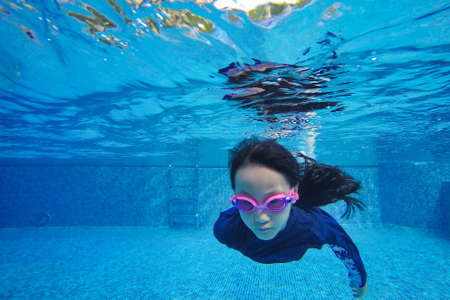Understanding Swim Bladder Disease
Swim bladder disease is a common health issue that affects many types of fish, especially those kept in home aquariums across the United States. The swim bladder is an internal gas-filled organ that helps fish control their buoyancy, allowing them to maintain balance and navigate easily through water. When this organ becomes compromised, fish may have trouble swimming upright, float uncontrollably to the surface, or sink to the bottom of the tank. Typical symptoms include difficulty maintaining normal position in the water, swimming upside down or sideways, bloated belly, and even loss of appetite. This condition can occur in both freshwater and saltwater species but is most frequently seen in popular aquarium pets like goldfish and bettas. Because these fish are often bred for specific physical traits or kept in environments that dont always mimic their natural habitat, they may be more prone to swim bladder issues. Understanding the basics of this disease is the first step toward providing better care and ensuring the health of your aquatic pets.
Causes of Swim Bladder Disease
Swim bladder disease is a common issue among aquarium fish in the United States, and it often results from several preventable factors. Understanding these causes is essential for every fish keeper who wants to keep their aquatic pets healthy and active. Below, we break down the main contributors to swim bladder disease frequently observed in American home aquariums.
Typical Causes in U.S. Aquariums
| Cause | Description |
|---|---|
| Overfeeding | Feeding fish too much or using inappropriate food can lead to digestive issues that put pressure on the swim bladder, making it hard for fish to maintain balance. |
| Poor Water Quality | High levels of ammonia, nitrites, or nitrates, often due to infrequent water changes or overstocked tanks, can stress fish and increase susceptibility to swim bladder problems. |
| Sudden Temperature Changes | Rapid drops or rises in tank temperature can shock fish, affecting their metabolism and swim bladder function. This is especially relevant during seasonal changes or with malfunctioning heaters. |
| Bacterial Infections | Bacterial pathogens thrive in unclean environments and can infect the swim bladder directly or indirectly by weakening the fish’s immune system. |
Other Contributing Factors
- Poor Diet: Low-quality foods lacking in fiber or nutrients can exacerbate digestive and buoyancy issues.
- Physical Injury: Rough handling or aggressive tank mates may physically damage the swim bladder.
Key Observations from U.S. Fishkeepers
Anecdotal evidence from American aquarium hobbyists shows that overfeeding—especially with floating pellets—and sudden drops in tank temperature are leading triggers for swim bladder disease. Many owners have also reported outbreaks following lapses in routine water maintenance. Being mindful of these causes can go a long way toward prevention.
![]()
3. Identifying Swim Bladder Issues
Noticing swim bladder disease early is crucial for your fishs recovery and overall health. The most common signs include difficulty swimming upright, floating on one side, sinking to the bottom, or struggling to maintain balance. You might see your fish bobbing at the water’s surface, tilting sideways, or even swimming upside down. Sometimes they may have a bloated appearance or show less interest in food.
Practical Tips for Quick Observation
Set aside a few minutes each day to observe your fish during feeding times and throughout the day. Watch how they move through the tank—healthy fish should swim smoothly and actively. Take note if any fish isolate themselves, gasp at the surface, or seem unusually lethargic. Keep an eye out for physical changes like swollen bellies or curved backs.
Daily Tank Routines
Make checking on your fish part of your daily routine, just like feeding or water changes. A clean tank with stable temperatures and good water quality helps prevent stress that can trigger swim bladder problems. Consistently monitor water parameters like ammonia, nitrite, nitrate, and pH levels using reliable test kits.
When to Take Action
If you spot any unusual swimming behaviors or physical symptoms, act quickly—early intervention can make all the difference. Isolate affected fish in a hospital tank if possible and review their diet and tank conditions. Consulting with an experienced aquarist or veterinarian can provide further guidance tailored to your situation.
4. Effective Treatment Solutions
If you notice your fish showing signs of swim bladder disease, taking prompt and effective action at home can make a big difference. Here are some practical steps that American hobbyists can follow to help their aquatic pets recover:
Fasting Routine
One of the first things you should try is fasting your fish for 24-48 hours. Many cases of swim bladder disease are caused by overeating or improper diet, so giving your fish’s digestive system a short break can help clear any blockages. During this time, remove any uneaten food from the tank to prevent water quality issues.
Proper Feeding Methods
After fasting, resume feeding with easy-to-digest foods. Consider offering cooked, peeled peas (with the shell removed), as they are high in fiber and can help promote healthy digestion. Feed small amounts and observe how your fish responds. Avoid floating pellets or flakes that may cause gulping of air; instead, soak dry food briefly or switch to sinking options.
| Feeding Tip | Why It Matters |
|---|---|
| Sinking Pellets | Reduces air intake while eating |
| Soaked Food | Easier to digest and less likely to expand in the stomach |
| Peeled Peas | Acts as a natural laxative for fish |
| Small Portions | Prevents overeating and bloating |
When to Seek Professional Advice
If your fish does not improve within a few days, or if symptoms worsen (such as severe imbalance, persistent floating/sinking, or loss of appetite), it’s time to reach out for professional help. Contact a local aquatic veterinarian—many metro areas in the U.S. now have specialists experienced in treating ornamental fish. Alternatively, reputable pet stores often have knowledgeable staff who can provide guidance and recommend over-the-counter treatments if needed.
Key Signs for Veterinary Attention:
- No improvement after home care efforts
- Visible injury or swelling on the fish’s body
- Other tank mates showing similar symptoms (potential infection)
- Lethargy or refusal to eat for more than three days
Your Role as a Responsible Fish Keeper
Treating swim bladder disease at home requires observation and patience. By following these steps and knowing when to seek expert advice, you’ll give your fish the best chance at recovery while building your confidence as an aquarium hobbyist.
5. Preventing Swim Bladder Disease
Proactive Tank Maintenance
One of the most effective ways American fish keepers prevent swim bladder disease is through consistent and proactive tank maintenance. Regular water changes—typically about 25% weekly—help maintain optimal water quality, reducing harmful ammonia and nitrite levels that can stress fish and impact their buoyancy. Using a reliable water testing kit to monitor pH, ammonia, nitrate, and nitrite levels ensures the environment remains stable. Clean filters routinely without destroying beneficial bacteria, and remove uneaten food or debris from the substrate to minimize contamination.
Ideal Feeding Habits
Overfeeding or feeding the wrong types of food are common causes of swim bladder issues. American aquarists often recommend feeding high-quality pellets or flakes specifically designed for your fish species. To further prevent floating problems, soak dry foods before offering them to your fish, as this reduces air ingestion. Schedule feedings twice a day in small amounts, making sure all food is consumed within a couple of minutes. Consider incorporating occasional meals of blanched peas or other fiber-rich veggies to help digestion, which supports healthy swim bladder function.
The Importance of a Stable Tank Environment
A stable tank environment is crucial for preventing swim bladder disease. Keep your aquarium away from direct sunlight or drafts to avoid sudden temperature swings. Use a reliable heater and thermometer to maintain consistent temperatures appropriate for your fish species—most tropical fish thrive between 74-78°F. Minimize stress by providing plenty of hiding spots with plants or decorations, and avoid overcrowding the tank as competition can lead to aggression and stress-related illnesses.
American Fish Keepers Best Practices
Across the United States, experienced hobbyists emphasize the value of routine observation—watching your fish daily helps spot early signs of distress or abnormal swimming behavior. By combining diligent tank care, proper nutrition, and environmental stability, you set up your aquatic friends for long-term health and reduce the risk of swim bladder disease before it starts.
6. Additional Resources for Fish Owners
Dealing with swim bladder disease in your aquarium can feel overwhelming, especially if you’re new to fishkeeping. Thankfully, there are plenty of reputable U.S.-based resources and supportive communities that can help you navigate this challenge. Tapping into these trusted sources not only gives you access to expert advice but also connects you with fellow hobbyists who have faced similar issues.
Local Aquarium Societies
Joining a local aquarium society is one of the best ways to gain hands-on knowledge and support. These groups often host meetings, workshops, and Q&A sessions where you can discuss problems like swim bladder disease in person. Use resources like the Marine Aquarium Societies of North America (MASNA) to find a club near you.
Reputable Online Forums
If in-person meetings aren’t convenient, online forums offer another valuable platform. Well-moderated sites such as FishLore and AquariaCentral provide sections specifically focused on fish health issues, including swim bladder disease. Here, you’ll find practical tips from experienced aquarists, product recommendations, and troubleshooting guides tailored to American hobbyists.
Extension Service Websites
Don’t overlook university extension programs—they’re a gold mine for science-backed information on fish care. Many state universities operate extension websites that cover common fish diseases, prevention strategies, and treatment options. For example, check out the University of Florida IFAS Extension or the Penn State Extension Aquaculture Program. These resources are regularly updated by aquatic veterinarians and researchers.
Getting Connected Makes a Difference
No matter where you are on your fishkeeping journey, reaching out to these resources can make a real difference when managing swim bladder disease. Don’t hesitate to ask questions or share your experience—chances are, someone else has been there too and is happy to help.


